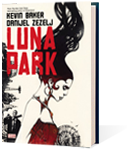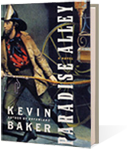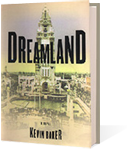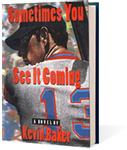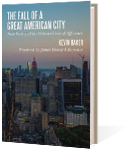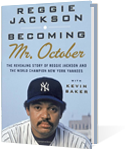I have a confession to make. In the forty years I have lived in Manhattan, I have never once stood in Times Square and waited for the ball to drop on New Year’s Eve.
It is, I know, one of those obligatory New York experiences, like going to the top of the Empire State Building or climbing the Statue of Liberty. Back in the roaring Seventies, a friend of mine went to stand there for hours in the dark and cold. She reported that the cops wouldn’t let anyone return once they’d left the police pens, even to use the bathroom — so of course many resorted to relieving themselves where they stood. As the evening wore on, other merrymakers decided to dispose of their empty liquor bottles by hurling them into the crowds around them. Happy new year!
I am sure things are much more civilized now, in our more sedate age. Standing in Times Square really is one of our great traditions, a symbolic re-enactment of how our city became transformed by the modern age. It is a celebration of light, and the start of the city’s long transition from a hub of industry to one of diversion.
In the nineteenth century, the leading December 31 tradition was to go stand in front of Trinity Church, sing hymns, and listen to the church bells ring in the new year. This drew as many as fifteen thousand people, “from New Jersey, Long Island, and even Staten Island,” as the Times reported in 1875, completely overwhelming the congested downtown. Worse yet, the church bells’ chimes would often be drowned out by the din of revelers blowing on tin horns. In 1893, the Rev. Dr. Morgan Dix, longtime rector of Trinity and scion of a prominent New York family, threatened to put an end to this impertinence once and for all by canceling the bell ringing. In response, some 30 young “ragamuffins” from some of the city’s poorer wards showed up at Dr. Dix’s Chelsea home, passed in a letter “in a scrawly, boyish hand,” then serenaded him with their own noisemakers.
Trying to curb the increasingly boisterous celebrations, social reformers tried to start “sober festivals” in city parks, featuring such attractions as men’s choral groups singing patriotic songs, though that only went so far: After one attempt on the last day of 1900, it was reported that a chorus a thousand strong in City Hall Park “gave forth splendid melody, which, unfortunately, could not be heard at any distance” because of all the horns the crowd of a hundred thousand onlookers was blowing.
For the very rich, meanwhile, the custom had long been to open up their summer cottages — that is, vast marble mansions — in Newport for the holiday season, and hold lavish dinners there. Meanwhile, in the city’s seedier districts, mobs of drunks engaged in rowdier pastimes, following in the tradition of the 1820s “Callithumpians” who smashed everything in sight and attacked those swells who did remain in town on their way home from New Year’s balls.
All of that had already begun to change with the coming of the light on New Year’s Eve, 1879. Thomas Edison, the showman, had invited the world out to see the new year arrive in Menlo Park, which had been festooned with his new incandescent bulbs from the train station to his workshops. A reporter compared the effect to “the mellow sunset of an Italian autumn,” and as the old year sank away and the light grew in the darkness, the crowd gasped, “Marvelous!” and “Wonderful, wonderful!” Where the murky gaslight of the nineteenth century had only exaggerated the terrors of the city, “incandescent lighting,” as historian David Nasaw would write, “transformed the city from a dark and treacherous underworld into a glittering multicolored wonderland.”
There was a whole new class of white-collar New Yorkers on hand to enjoy it: clerks, managers, assistant managers, salesmen, saleswomen, secretaries, stenographers, typists (or “typewriters,” as they were then called). They worked shorter hours and had more spending cash than the vast majority of people toiling in factories or in fields. Many of them, for the first time, were single men and women living alone in apartments.
Whole new entertainment districts, such as Coney Island, with its millions of mesmerizing lights, sprung up in ensuing decades to give those young people a racier form of fun. The neighborhoods around 42nd Street began to fill up with theaters and dance halls, nickelodeons and motion picture palaces, rooftop cabarets and grand hotels, and casinos and “lobster palaces.” The combined seating capacity of New York’s theaters doubled in the final decade of the 19th century — and the new entertainments advertised themselves, of course, with still more light. The first electric sign in Times Square appeared in 1897; nine years later, the Knickerbocker Theatre advertised its production of The Red Mill with a revolving windmill covered in lightbulbs. By 1913, there would be over a million lights illuminating what was now known as the Great White Way.
“The center of the classical city was the forum and the agora,” historian William Taylor noted. “Times Square, located at a major transportation hub, was neither….Times Square’s very centrality meant that whatever took place was immediately in the national spotlight.”
Arthur Ochs had both sought that spotlight and helped to create it. In 1904, the Times owner decided to move his paper’s offices uptown, from “Newspaper Row” just across from City Hall to what was then Longacre Square, a district in the notorious Tenderloin long known mostly for horse barns, carriage shops, and brothels. Thanks to another transforming wonder of the age, steel-frame construction, Ochs threw up a thin, elegant tower, twenty-five stories high, to house his newspaper on the little wedge where Seventh Avenue crossed Broadway at 42nd Street. It was at the time the second tallest building in the city — and therefore the second tallest building in the world.
Ochs would have made it the tallest building anywhere if he could, but the subway limited just how deep the Times Tower’s supporting basements could be. The West Side IRT tunnel actually went through his new basement, and above the newspaper’s presses, located in the building’s four massive sub-basements. Ochs had turned this into an asset, collaborating with the head of the new subway system, Times stockholder August Belmont, to rename the area “Times Square.” That set off a series of grotesque, anti-Semitic howls from the city’s Hearst papers, charging a conspiracy between Ochs and Belmont to make 42nd Street the new Jewish cultural center of the city. William Randolph Hearst himself signed an editorial describing Ochs in classic anti-Semitic adjectives of the day: “uneducated…oily…[with] obsequiously curved shoulders.”
Ochs slapped Hearst with a libel suit and moved on to his next coup. He set the official opening of the Times Tower for December 31, 1904, and offered an all-day street party, complete with a concert band, followed by midnight fireworks. The party drew an estimated two hundred thousand revelers, who lingered on to see the big light show. The Times proudly reported — in the very last edition before moving to its new home — that at midnight, “From base to dome, the giant structure was alight, a torch to usher in the newborn [year], a funeral pyre for the old which pierced the very heavens.”
Meanwhile, the crowd below made so much noise with its hand rattles and tin horns that it reportedly could be heard all the way up in Croton, thirty miles away. Others may have engaged in other New Year’s rituals typical of the time: using “paper ticklers” — better known today as “blowouts,” those streamer things you blow out in people’s faces — and blowing the new “sneezing powders” in each other’s faces, a favorite practical joke of the time, and one that was known to provoke fisticuffs. As well it might: Most of the popular sneezing powders would later be banned by the FDA because they were found to contain coal tar byproducts and the carcinogen dianisidine.
Fireworks in the middle of a jammed city square with little egress was an even riskier proposition; as it was, at the first Times Square celebration the hot ash from the exploded fireworks — and from an accompanying “dynamite bomb” — fell onto the crowds below. (Living as they did in a city full of elevated trains, New Yorkers were accustomed to this, but still.) By 1907, the city had banned fireworks at the Times Square festivities, but Times electrician Walter Palmer suggested a new attraction: a time ball.
Time balls had become a thing in the nineteenth century. The invention of the marine chronometer in the 1730s had allowed sailors to measure longitude at sea, but without knowing the correct time, one could sail far off course. Seaports around the world took to dropping a huge ball from the top of a tall flagpole at a set time — either noon or 1 p.m. — so that sailors could see them and set their chronometers accordingly. From the 1820s on, time balls were increasingly popular, most of them resembling gigantic basketballs or, appropriately, huge martini olives skewered on ponderous swizzle sticks.
Ochs assigned the crafting of the Times‘ first time ball to one Jacob Starr, a young German-Jewish immigrant. The first illuminated ball was just five feet in diameter, made of almost seven hundred pounds of iron, wood, and 25-watt electric lightbulbs. A mainmast was taken from the battleship USS New Mexico, and the ball was lowered by a set of pulleys.
The Times itself would move out of the Times Tower in 1914, that subway in the basement making it just too hard to run the presses, but it still owned the building until 1961, when it sold it to adman and developer Douglas Leigh, who stripped the Times Tower of its beautiful old Beaux-Arts cladding and character in the service of new occupant Allied Chemical. But Starr’s Artkraft Strauss company would go on making the ceremonial ball until 1996, using lighter and lighter materials to get it down to a mere two hundred pounds by 1955. For a time in the 1980s, the ball itself was replaced with an apple during the city’s ubiquitous “I Love New York” campaign, but that didn’t last. Lowered for decades “by six guys with ropes and a stopwatch,” according to Jeff Straus, president of Countdown Entertainment, which oversees the big drop, the ball was put on a computer timer for its sixty-second, seventy-foot dive in 1995, the same year it was tarted up with rhinestones and strobe lights.
Today, the Big Ball is nearly six tons and twelve feet in diameter and sits permanently atop what’s been renamed 1 Times Square, awaiting its big moment. It’s now programmed to project different “themes” each year, and its 2,688 Waterford crystals reflect the light from 32,256 red, blue, white, and green LEDs that maker Philips claims are “capable of creating a palette of more than 16 million vibrant colors” (even though the number of colors detectable to the human eye is said to be a scant 10 million). If you were to find the idea of this grossly ostentatious behemoth sliding down the top of a garish, empty shell of a building a metaphor for the city we’ve become, you would not be altogether wrong.
Through all the changes, the crowds in the square below waxed and waned. December 31, 1933, coming shortly after the repeal of Prohibition, saw a particularly raucous, crowded celebration, drawing at least four hundred thousand people — a significant number of them women. In December 1942 and 1943, when New York observed its citywide nighttime dim-out in order to keep Nazi submarines from using all the bright lights as a backdrop for torpedoing American ships, no ball dropped, and the subdued throngs instead listened to chimes ringing out through sound-truck speakers. The end of 1945 brought out an ecstatic throng, and in the postwar years crowds of over a million became common.
Yet for all the enthusiasm, in those years the crowds didn’t really start to gather until 10 or 10:30, and dispersed quickly after the ball dropped. There was nothing else really to see outside, and Times Square still boasted topflight hotels and clubs, featuring entertainment by the likes of Duke Ellington and Louis Armstrong. People would come out, watch the ball drop, and head back to the bar.
NBC nonetheless decided to make it a television show, albeit a twenty-minute show at first, from 11:45 to 12:05, hosted by the famed radio ventriloquist Paul Winchell — yes, he was a ventriloquist on the radio — and his dummy, Jerry Mahoney. (Winchell would go on to provide the voice of Tigger in Disney’s Winnie the Pooh films, as well as patent the first artificial heart.) Within a few years, CBS’s New Year’s show had begun featuring the stylings of Guy Lombardo and his Royal Canadians at the Roosevelt Hotel and then the Waldorf Astoria, playing their signature song, “Auld Lang Syne,” an old Scottish tune popularized by Robert Burns in New York a century earlier. The ball dropping was still just a short cutaway, and that would not change until the 1970s, when ABC brought Dick Clark into the square to host “New Year’s Rockin’ Eve.”
Alternatives remained. Festivals of one kind or another had taken place in Central Park since before 1912, when another city financial crisis threatened to cancel it. Andrew Carnegie, J.D. Rockefeller, and other kindly robber barons stepped in to fund the event. The city started new celebrations in the park in the late 1960s, despite the park’s reputation at the time. Finances threatened to kill that, too, but this time individuals who were not necessarily billionaires stepped in, and in 1976 they produced an actual parade, led by individuals costumed as the New Year and the Spirit of the Bethesda Fountain, from Rockefeller Center to the park, where a crowd of ten thousand was entertained by jugglers, performance artists, and ten park guides dressed as giant hands.
Yet if the crime rates of the Seventies were not sustainable, neither was the creativity, and by 1980 the Central Park Festival had morphed into the “Midnight Run” — excuse me, the “Emerald Nuts Midnight Run” — which anyone can join this year for a paltry $65 fee. When my wife and I took part in it, some years ago (when it did not cost $65), it was a fun party for the first mile or so, with costumed runners drinking Champagne out of the bottle. Then it turned into a numbing slog, through three more miles of spectral landscape. As my wife sprinted far ahead in the last mile, I heard a body fall and a short scream somewhere behind me. I did not look back.
Yet the main draw for the city throngs remains Times Square. With its retread musicals and its national-chain eateries, Times Square today is a happier, safer, blander, less significant place than it has ever been before. But it is still the empire of light. Looking at the pictures of the crowds gathered at midnight over the years, it is remarkable how the hats change, the coats change, the buildings and the signs around them rise and fall. But the faces look the same, staring up, mesmerized, into the light.

